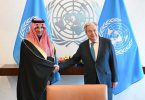(eTN) – The UN World Tourism Organization (UNWTO) has undertaken to fund a major project for 2011 to develop a program to integrate emergency management and tourism, one of the key missing links in tourism crisis and recovery management. Although there is considerable informal linkage between the tourism industry and emergency management authorities, there is very little in terms of a formal relationship with the notable exception of airlines and airports.
Most airports in the world, and especially international gateway airports, feature strong links between the airlines, the airport authorities, and emergency management agencies such as the military , ambulance, fire fighting, customs, border protection, and police services. The outbreak of SARS in 2003 and the more recent incidence of H1N1 in 2009-10 resulted in screening processes being introduced at most major gateway airports throughout the world.
However, the integration between these sectors of the tourism industry and emergency management has not been replicated in other sectors of the tourism industry. The recent spate of terrorist attacks against hotels in Pakistan, Indonesia, and India have not resulted in the formalization of an integrated approach between hotel chains and emergency management agencies who have been reactive in their response rather than proactive.
The biggest threats to tourism over the past year have come from natural disasters rather than made disasters. Tsunamis, storms, blizzards, volcanic eruptions, earthquakes, and flooding have all impacted on tourism infrastructure and the movement and safety of tourism. The domestic holiday season in Queensland Australia has been heavily disrupted by floods, which cover an area equivalent to France and Germany. Emergency management and disaster planning need to address the issue of safe locations for tourism infrastructure. Does it really make sense to locate a resort on the water or even over the water in areas, which may be vulnerable to tsunamis and sea surges? Having an ocean view is great, but being swallowed up by the ocean does not make for an ideal tourist experience. The Indian Ocean Tsunami of 2004, the Samoan tsunami of 2009, and the 2010 tsunamis in Sumatra and Chile dramatically illustrated this point. Yet after a hurricane or tsunami, many of the resorts, which have been destroyed, are rebuilt in exactly the same vulnerable sites. Effective planning regulations would prevent this sort of greed or market-driven madness.
The eruption of the Eyjafjallajokull volcano in Iceland in 2010 was arguably the most disruptive event for world tourism in 2010. The prolonged closure of many airports and the airspace of a number of European countries disrupted tourism movements globally. Although the airline industry had a contingency plan for an event of this sort, the remainder of the tourism industry was confused and sluggish in response. There was no linkage with emergency management agencies to establish emergency accommodation and transport arrangements for stranded travelers. Many travelers affected by the eruption had little or no recourse to insurance coverage and financial compensation.
The dissonance between emergency management and tourism was brought home to me when I attended a conference organized by the Australian Emergency Management Institute in December 2010. This highly professional organization coordinates emergency management policy for Australia and has trained emergency management professionals from all over the world. It is currently playing an important role in managing the flood crisis in Queensland. At the conference, I presented a paper, which dealt with the integration of tourism and emergency management, and as many of the delegates (among them world respected authorities in emergency management) admitted, it was a linkage that had never occurred to them. In fairness it is a linkage, which until recently, had never occurred to many leading professionals in the tourism industry, which is why the UNWTO deserves a great deal of credit for addressing it.
One of the points I sought to communicate at the conference is that developing integration between emergency management agencies and tourism involved a mutuality of benefit. Tourism infrastructure has the potential to offer both tourist and local residents emergency accommodation and evacuation transportation in the event of a disaster. Accommodation providers and tour operators have the capacity to identify victim and survivors registered with them in the event of an emergency. On the other hand, areas with high concentrations of tourists need to be assured they have adequate medical facilities, police resources, and access to emergency services to cater for the local resident population, as well as the transient population of tourists.
There are international implications attached to such integration. Criminal or terrorist acts against tourists, unchecked health problems, and inadequate responses to natural disasters can greatly damage the reputation of a tourism destination in key source markets. Many articles in eTurboNews have indicated the perceptual damage caused to destinations, which result from inadequate security and protective measure afforded to tourists. While the integration between tourism and emergency management is not in itself going to prevent tourists getting into trouble, it is an important step in advancing risk management in the tourism industry.
The author, David Beirman, is a Senior Lecturer in tourism at the University of Technology, Sydney.






















